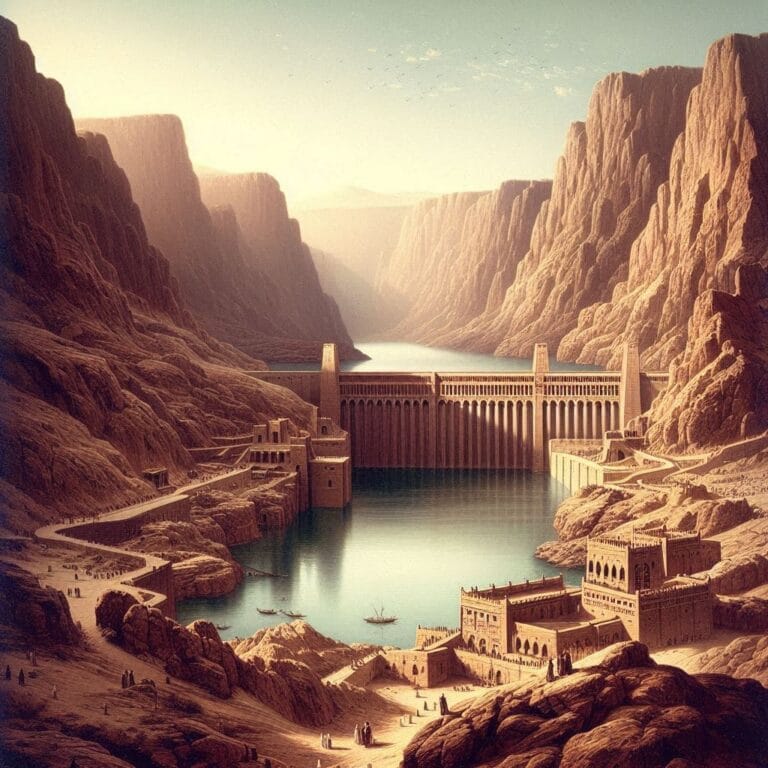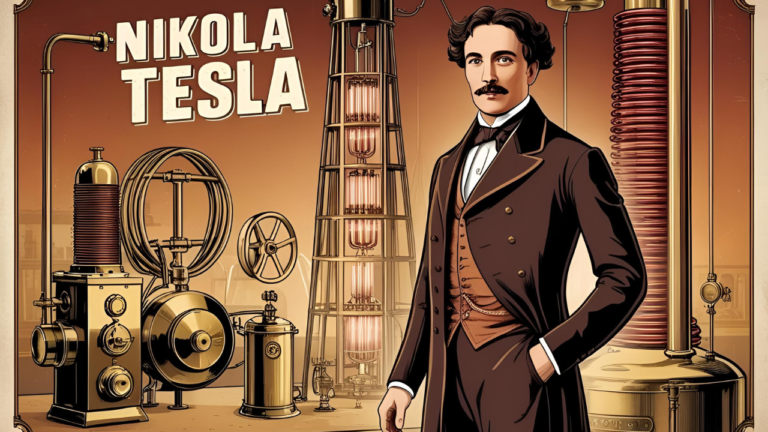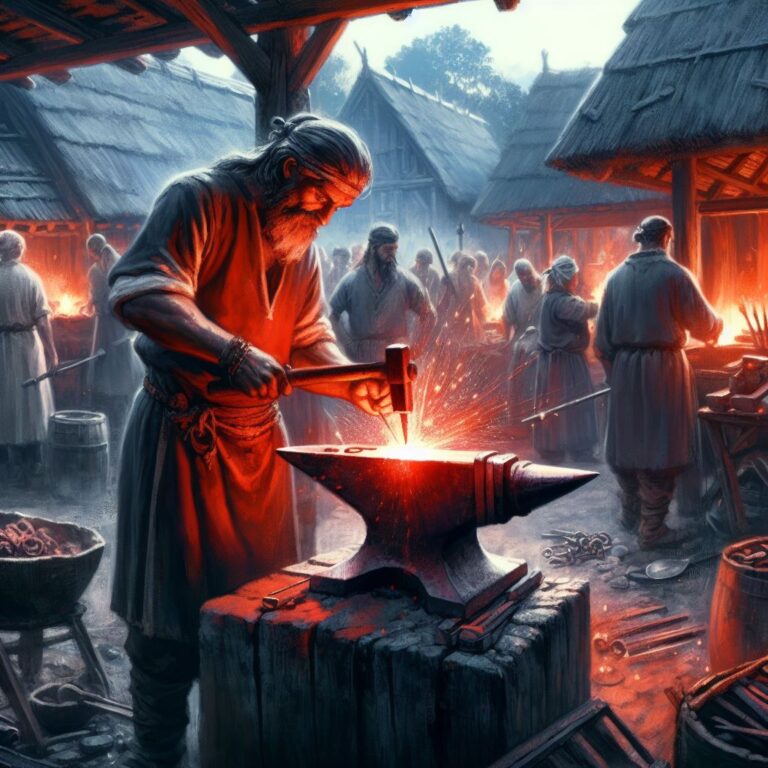Introduction: Who is the Father of Physics?
Physics is one of the oldest and most fundamental sciences, shaping our understanding of the universe from ancient times to the modern era. The title “Father of Physics” is often debated, as multiple physicists have made groundbreaking contributions to different branches of the field. While Galileo Galilei, Sir Isaac Newton, and Albert Einstein are all considered pivotal figures, each contributed uniquely to classical and modern physics.
Contributions of Key Figures
- Galileo Galilei (1564–1642) is often credited as the “Father of Observational Physics” for his pioneering work in kinematics, astronomy, and experimental physics. He improved the telescope, discovered Jupiter’s moons, and formulated laws of motion that influenced Newton.
- Isaac Newton (1643–1727) is frequently regarded as the “Father of Classical Physics” due to his discovery of the laws of motion and universal gravitation, which laid the foundation for mechanics and classical physics.
- Albert Einstein (1879–1955) revolutionized physics in the 20th century and is known as the “Father of Modern Physics” for his theories of relativity, quantum mechanics contributions, and the mass-energy equivalence formula (E=mc²).
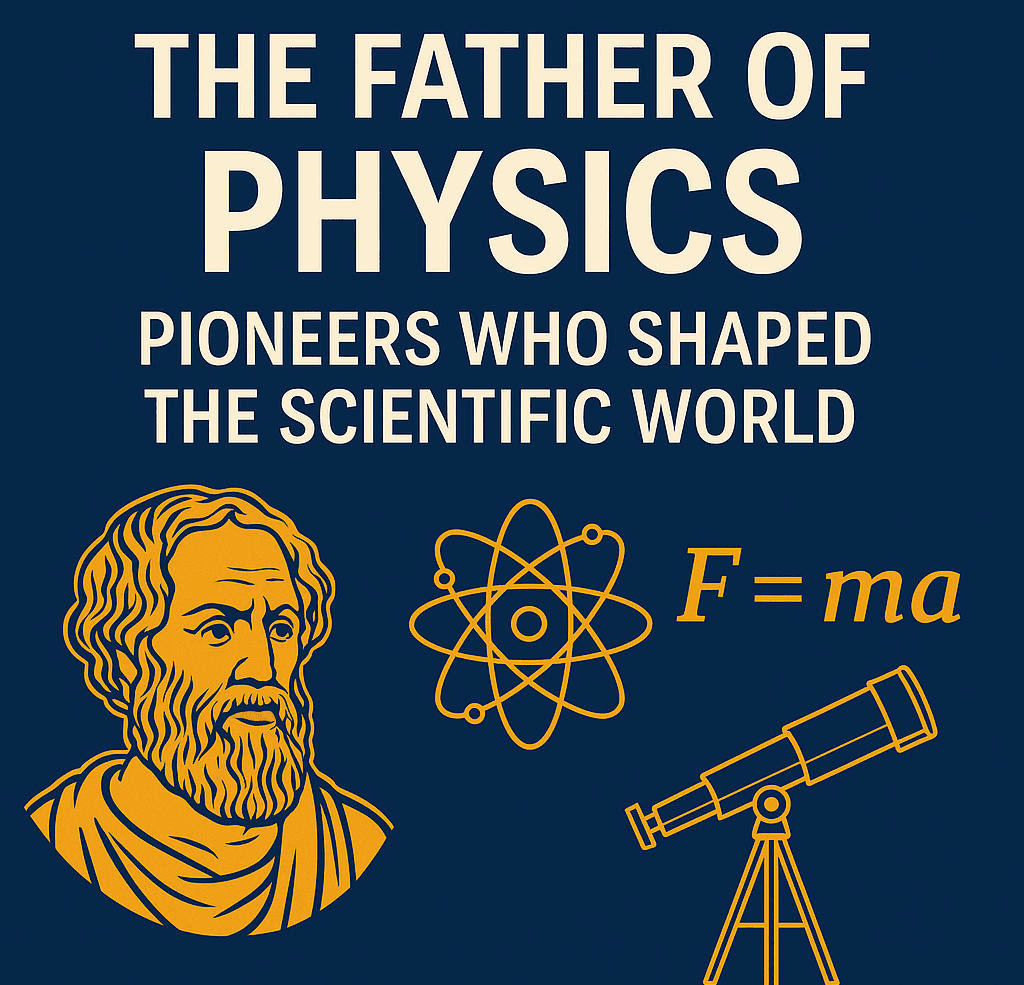
Evolution of Physics: From Ancient to Modern Times
The journey of physics did not begin with Newton or Einstein. Ancient Greek philosophers like Archimedes and Aristotle explored mechanics and motion, while Indian and Islamic scholars contributed significantly to optics and mathematics. The modern era of physics continues to be shaped by quantum mechanics, relativity, and cutting-edge research in particle physics.
By understanding the collective efforts of these legendary scientists, we gain a deeper appreciation of physics as a constantly evolving discipline that continues to unlock the mysteries of the universe.
Ancient Foundations of Physics
Physics, as we understand it today, has roots in the works of ancient scholars who laid the groundwork for fundamental concepts in motion, mechanics, optics, and natural philosophy. From the classical Greek era to early Islamic scholars, these thinkers pioneered theories that shaped scientific progress for centuries.
Aristotle (384–322 BC) – Motion and Causality
Aristotle was one of the most influential ancient philosophers in the history of physics. He proposed a framework for understanding motion and matter, which dominated scientific thought for centuries. His concept of the four elements (earth, air, fire, water) and the idea that objects naturally sought their “proper place” in the universe influenced medieval science. However, his reliance on qualitative rather than quantitative analysis later hindered the progress of physics until the Renaissance era.
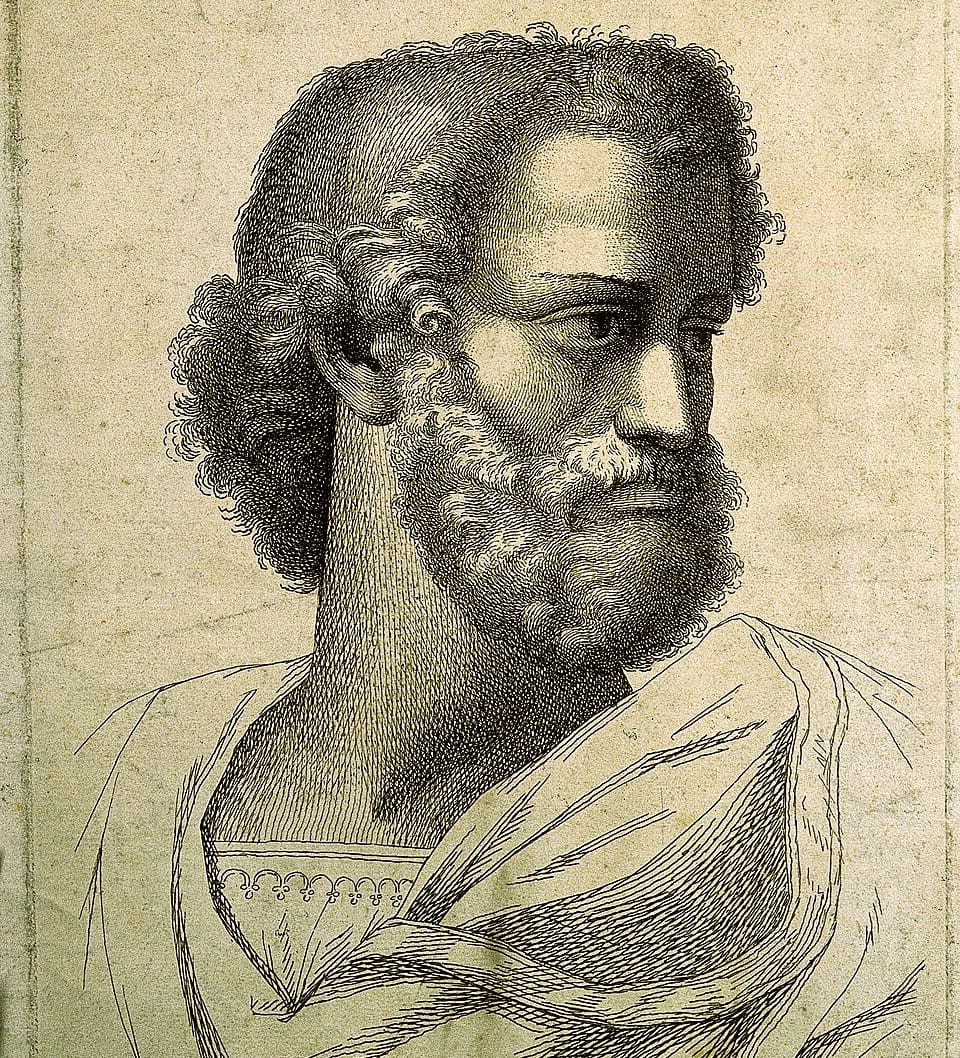
Aristotle’s “Physics” was the first recorded work to explore motion, causality, and the nature of the physical world. He also formulated the geocentric model, which placed Earth at the center of the universe, a view later challenged by Aristarchus and Copernicus.
Archimedes (287–212 BC) – Hydrostatics, Mechanics, and Levers
Archimedes, often regarded as one of the greatest minds of ancient physics, made groundbreaking contributions in mechanics and fluid dynamics. He formulated the principle of buoyancy, famously stating, “Eureka!” He realized that when an object is placed in water, it is pushed upward with a force equivalent to the weight of the liquid it displaces.
He also worked extensively on the laws of levers and pulleys, demonstrating mathematically how small forces could be amplified to lift heavy objects. His work laid the foundation for classical mechanics and influenced later physicists, including Galileo and Newton.
Archimedes’ inventions, such as the Archimedean screw for moving water and complex war machines, showcased his ability to apply theoretical physics to practical problems.
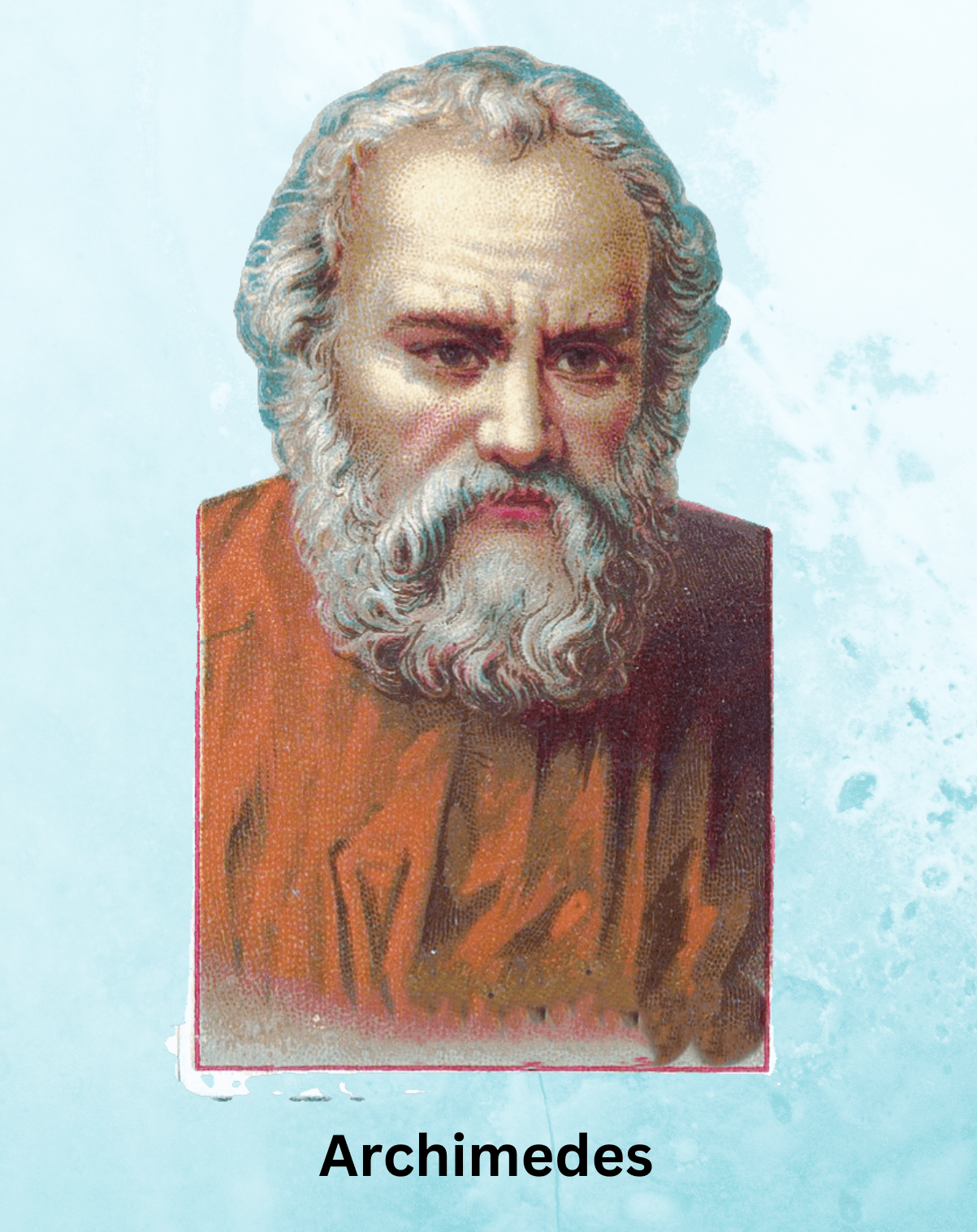
Alhazen (965–1040 AD) – Optics and the Scientific Method
Alhazen (Ibn al-Haytham) was a pivotal figure in medieval physics, often referred to as “The Physicist” in medieval Europe. He revolutionized the study of optics with his Book of Optics, where he provided experimental evidence for the intromission theory of vision—the idea that light enters the eye rather than being emitted from it.
Beyond optics, Alhazen advanced the scientific method, emphasizing experimentation and mathematical validation of theories. His studies on light refraction and reflection influenced later European scientists such as Kepler and Newton. Additionally, he was among the first to describe the pinhole camera (camera obscura), demonstrating how light travels in straight lines.
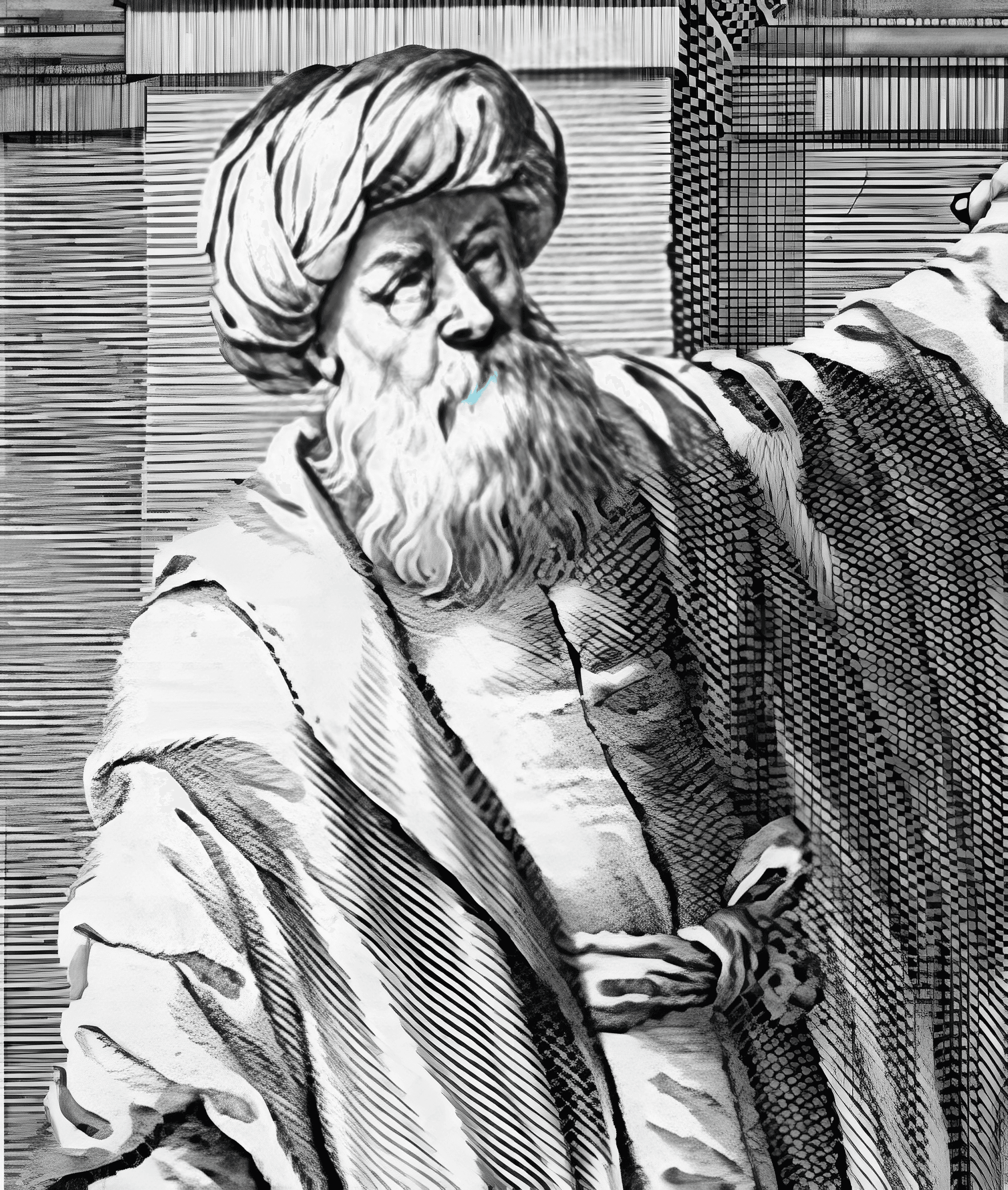
Legacy of Ancient Physics
The contributions of these ancient physicists set the stage for the scientific revolutions that followed. While Aristotle’s theories were later revised or replaced, his analytical approach shaped early physics. Archimedes’ mathematical principles of mechanics provided a foundation for Newtonian physics, and Alhazen’s empirical methods helped establish modern scientific inquiry.
By integrating observation, experimentation, and mathematics, these early thinkers paved the way for the evolution of physics from a branch of philosophy into a rigorous science.
Galileo Galilei: The Father of Modern Physics?
Revolutionizing Physics and Astronomy
Galileo Galilei (1564–1642) is widely regarded as the “Father of Modern Physics” due to his pioneering work in kinematics, observational astronomy, and the scientific method. Born in Pisa, Italy, Galileo initially studied medicine but soon shifted his focus to mathematics and natural philosophy. His relentless pursuit of scientific truth led to some of the most revolutionary discoveries in history, changing the way we perceive the universe.
Breaking Aristotle’s Theories: Kinematics and Mechanics
Before Galileo, Aristotelian physics dominated scientific thought, holding that heavier objects fall faster than lighter ones. Galileo challenged this notion by conducting experiments from the Leaning Tower of Pisa, demonstrating that all objects, regardless of mass, fall at the same rate under gravity—a principle later formalized by Newton. This discovery laid the foundation for classical mechanics.
His work on kinematics further revolutionized physics. He studied projectile motion and concluded that objects moving under the influence of gravity follow a parabolic trajectory, an insight critical to modern physics and engineering. He also discovered the isochronism of the pendulum—the idea that the period of a pendulum’s swing is independent of its amplitude—an observation that influenced the development of precise timekeeping devices.
Galileo’s Telescopic Discoveries: Expanding the Cosmos
While Galileo did not invent the telescope, he significantly improved it, allowing for magnifications of up to 30x. With this enhanced instrument, he made a series of groundbreaking astronomical discoveries that challenged centuries-old beliefs.
His major observations included:
- The Moon’s surface is rough and cratered, contradicting Aristotle’s claim that celestial bodies were smooth and perfect.
- Jupiter has four large moons (Io, Europa, Ganymede, and Callisto), proving that not all celestial objects orbit the Earth.
- Venus exhibits phases similar to the Moon, confirming that it orbits the Sun, which strongly supported Copernicus’ heliocentric model over the geocentric model.
These findings shattered the Ptolemaic worldview, which held that Earth was the center of the universe. Galileo’s discoveries provided the first observational evidence that the Sun, rather than the Earth, was at the center of the solar system.
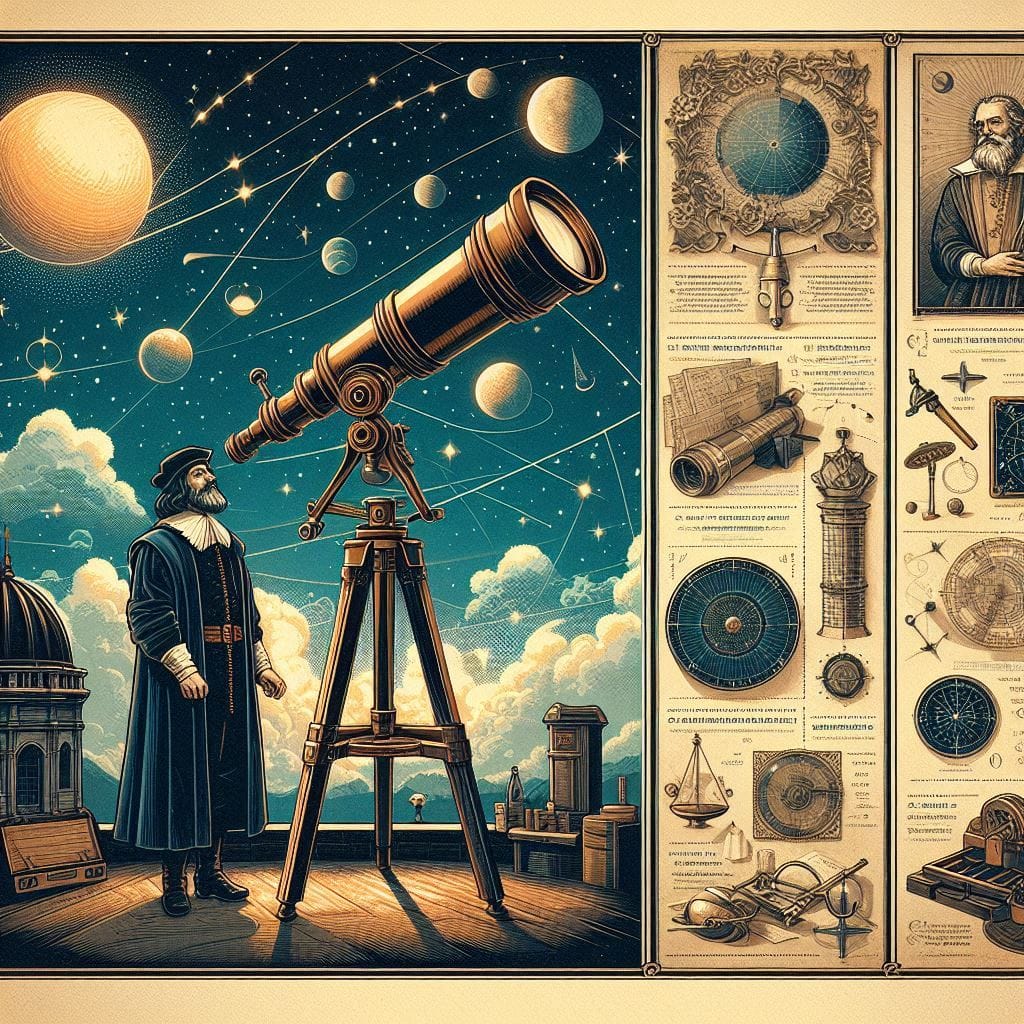
Conflict with the Church: Science vs. Dogma
Galileo’s advocacy for heliocentrism brought him into direct conflict with the Catholic Church, which viewed the Copernican model as heretical. In 1616, the Church formally condemned the heliocentric theory, and Galileo was warned to abandon his support for it.
However, in 1632, Galileo published his book, Dialogue Concerning the Two Chief World Systems, which presented arguments for and against heliocentrism. The book’s clear bias toward the heliocentric model angered the Church, leading to his trial for heresy in 1633. Galileo was forced to publicly recant his beliefs and was sentenced to house arrest for the rest of his life.
Despite this persecution, Galileo continued his work in physics, secretly writing Two New Sciences, which later influenced Isaac Newton’s laws of motion. His insistence on empirical observation and mathematical analysis over philosophical speculation marked a shift that would define modern science.
Galileo’s Legacy: The Birth of Experimental Science
Galileo’s work not only laid the groundwork for Newtonian physics but also established the modern scientific method, emphasizing observation, experimentation, and mathematical reasoning over abstract speculation.
Today, his contributions are fundamental to fields ranging from astronomy and physics to engineering and space exploration. His courage in challenging dogma with evidence-based science continues to inspire scientists and researchers. It is for these reasons that Galileo is rightly remembered as one of the greatest physics pioneers and the Modern Father of Physics.
Isaac Newton: The Father of Classical Physics
Isaac Newton (1642–1727) is widely regarded as the father of classical physics due to his groundbreaking work in mechanics, optics, and mathematics. His discoveries laid the foundation for modern physics, influencing generations of scientists.
Newton’s Three Laws of Motion
Newton’s most famous contribution is his three laws of motion, formulated in his seminal work Philosophiæ Naturalis Principia Mathematica (1687). These laws revolutionized our understanding of movement and force:
- Law of Inertia – An object remains at rest or in uniform motion unless acted upon by an external force.
- Force and Acceleration (F = ma) – The acceleration of an object depends on the force applied and its mass.
- Action and Reaction – Every action has an equal and opposite reaction.
These principles form the backbone of classical mechanics and are still fundamental in physics today.
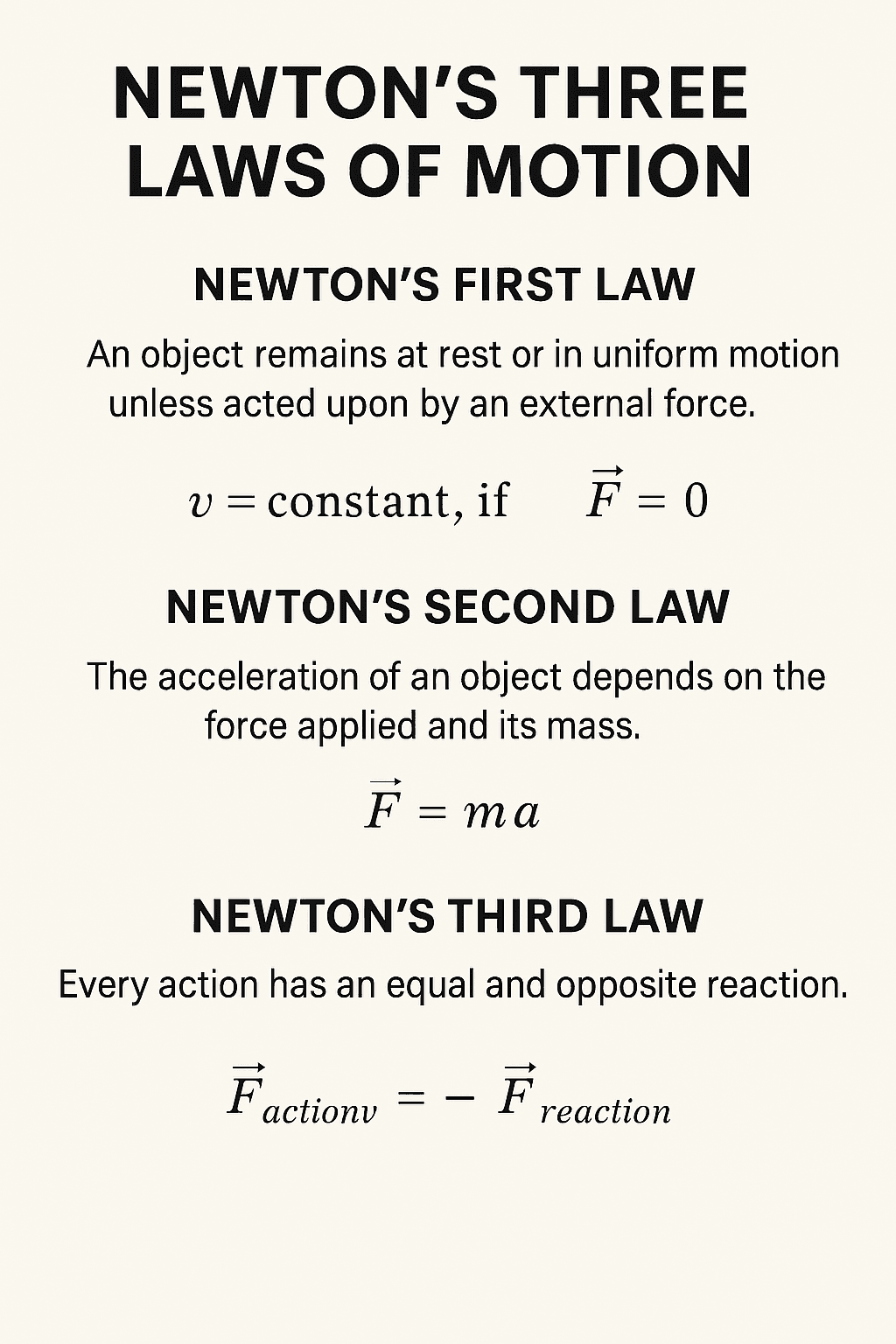
Universal Gravitation: The Law That Changed Science
Newton’s universal gravitation principle explains that all objects with mass exert an attractive force on one another, which increases with their mass and decreases with the square of the distance separating them. This principle explained planetary motion and helped establish Newtonian mechanics as the dominant scientific framework for centuries .
Development of Calculus
To support his laws of motion and gravity, Newton co-developed calculus, a mathematical tool essential for describing change and motion. His work in this field provided a powerful framework for solving complex physical problems, influencing everything from physics to engineering.
Contributions to Optics and the Reflecting Telescope
Newton also made significant advances in optics. He demonstrated that white light is composed of different colors, leading to the development of spectral analysis. His book Opticks (1704) explored the nature of light and color, influencing future studies in wave theory.
To improve astronomical observations, he invented the reflecting telescope, which used mirrors instead of lenses to eliminate chromatic aberrations, providing clearer images of celestial bodies.
Newton’s Enduring Legacy
Newton’s influence extended beyond physics; he played a crucial role in the Scientific Revolution, served as the President of the Royal Society, and reformed England’s currency system. His principles remained dominant until Einstein’s theory of relativity provided a more refined understanding of motion and gravity.
Today, Newton’s laws are still fundamental in physics, engineering, and space exploration, solidifying his title as the father of classical physics.
Albert Einstein: The Father of Modern Physics?
Albert Einstein is often considered the father of modern physics due to his groundbreaking contributions that reshaped our understanding of space, time, energy, and matter. His work laid the foundation for quantum mechanics, relativity, and even nuclear energy.
Special and General Relativity
In 1905, during his “Annus Mirabilis” (Miracle Year), Einstein published his Special Theory of Relativity, which introduced the revolutionary idea that time and space are not absolute but depend on the observer’s motion. One of the key conclusions of this theory was the famous equation E = mc², which showed the equivalence of mass and energy.
In 1915, he expanded on this work with the General Theory of Relativity, which proposed that gravity is not a force acting at a distance, as Newton suggested, but rather a warping of space-time caused by massive objects. This theory was later confirmed by the bending of starlight observed during a solar eclipse in 1919.
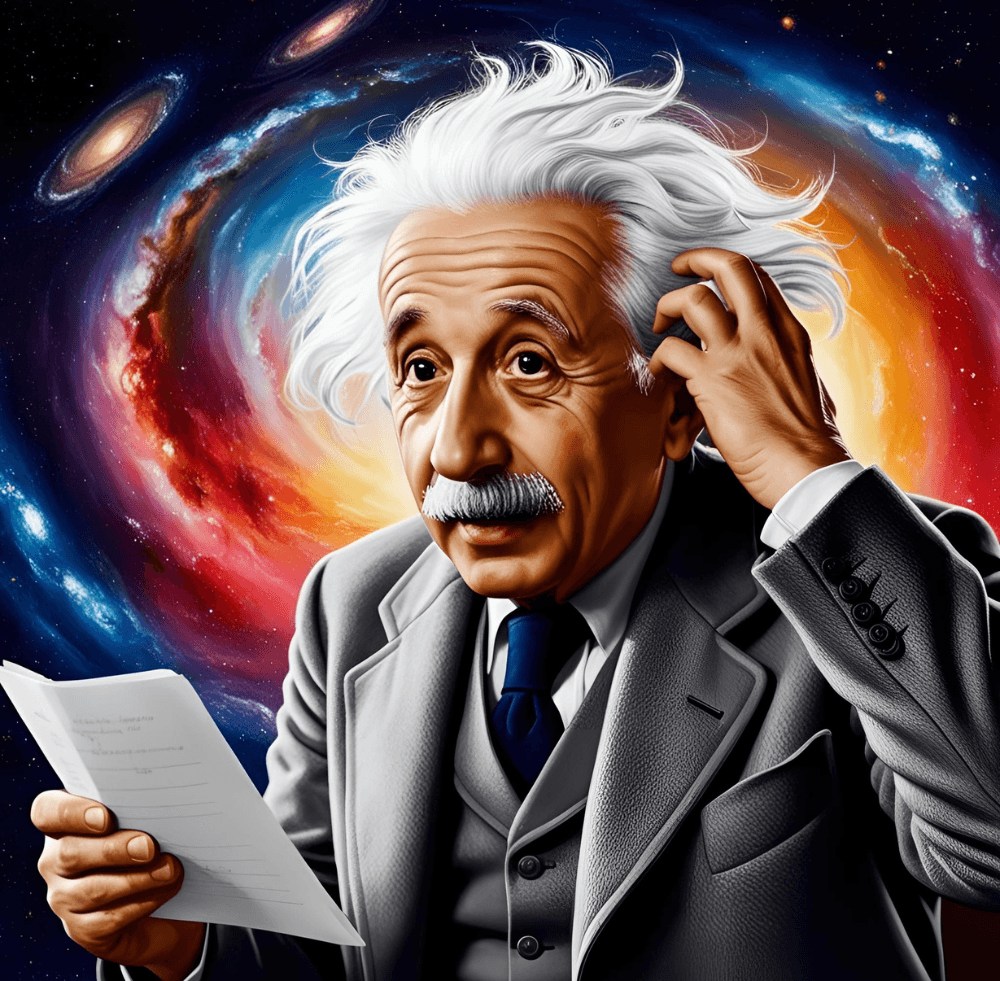
Photoelectric Effect and the Birth of Quantum Mechanics
Einstein’s photoelectric effect explanation was one of the key developments in quantum mechanics. He demonstrated that light behaves as both a wave and a particle, an idea that later led to the concept of wave-particle duality in quantum physics. His work on this phenomenon earned him the Nobel Prize in Physics in 1921.
Influence on Nuclear Energy and Cosmology
Einstein’s famous equation E = mc² was crucial in understanding the immense energy stored in atomic nuclei, ultimately leading to nuclear power and weapons. Though he was not directly involved in the Manhattan Project, he co-signed a letter to President Roosevelt warning about Nazi Germany’s potential development of atomic weapons, which helped initiate the project.
Beyond nuclear energy, Einstein also contributed to cosmology, proposing that the universe could be expanding or contracting. His equations were later confirmed when Edwin Hubble observed the expansion of the universe, validating what we now call the Big Bang theory.
India’s Contribution: The Father of Physics in India
India has produced some of the most influential physicists in history. The title of the Father of Physics in India is often attributed to C. V. Raman, but other Indian physicists have made groundbreaking contributions as well.
C. V. Raman – Discovery of the Raman Effect
C. V. Raman’s most famous contribution to physics was his discovery of the Raman Effect in 1928, which describes how light scatters when it interacts with molecules. This discovery played a crucial role in quantum physics and spectroscopy, earning him the Nobel Prize in Physics in 1930, making him the first Asian to win a Nobel in science.
Satyendra Nath Bose – Bose-Einstein Statistics
Satyendra N. Bose worked closely with Einstein to develop Bose-Einstein statistics, which describe the behavior of bosons—particles that follow special quantum rules. His work laid the foundation for modern quantum mechanics and led to the later discovery of Bose-Einstein condensates, a new state of matter.
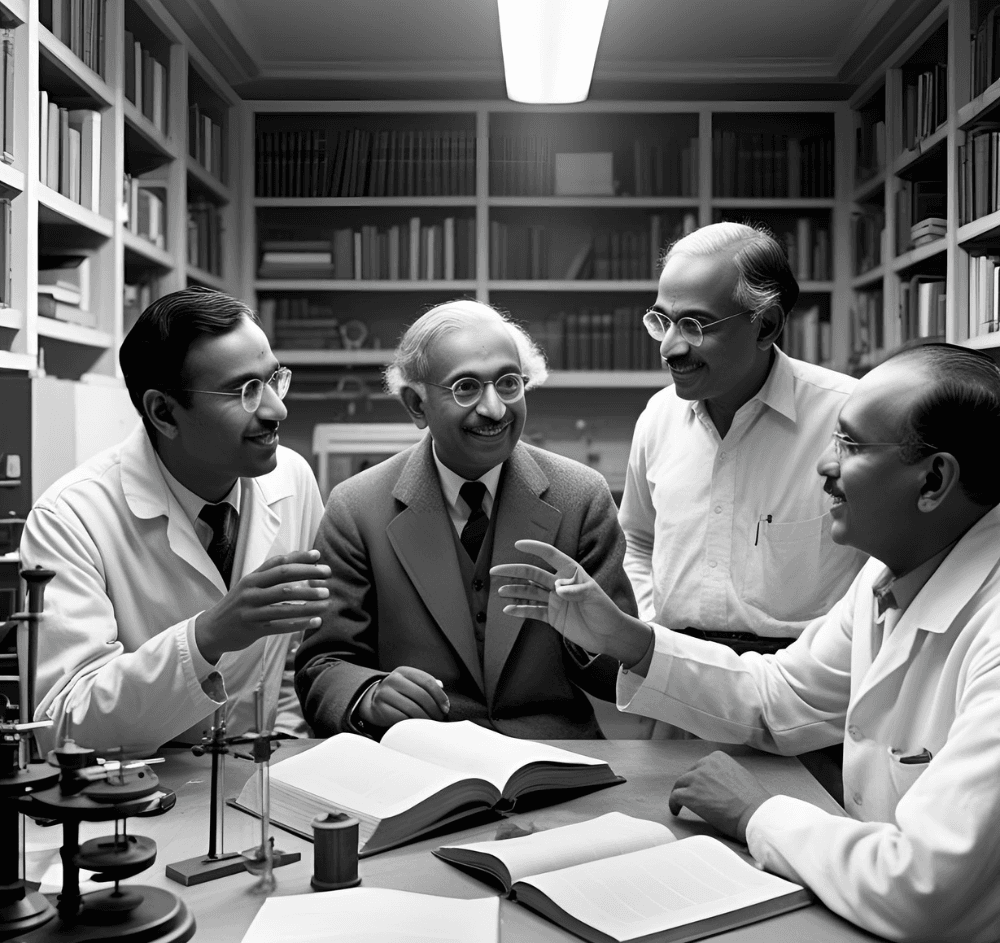
Jagdish Chandra Bose – Pioneering Work in Radio Waves and Electromagnetism
Jagdish Chandra Bose was a pioneer in the field of radio waves and electromagnetism. He was among the first to demonstrate wireless communication, even before Marconi, and made significant contributions to the study of plant physiology and microwave technology.
These physicists played a crucial role in shaping modern physics, not just in India but globally. Their contributions continue to influence research in quantum mechanics, electromagnetism, and optics.
Unsung Heroes: Forgotten Physicists Who Changed Science
While many physicists like Newton and Einstein are household names, several others made critical contributions to science but remain relatively lesser known. Here, we explore the pioneering work of James Clerk Maxwell, Michael Faraday, Hendrik Lorentz, and Émilie du Châtelet.
James Clerk Maxwell: The Architect of Electromagnetism
James Clerk Maxwell (1831–1879) revolutionized physics by unifying electricity, magnetism, and light into a single framework—what we now call classical electromagnetism. His famous Maxwell’s equations mathematically described how electric and magnetic fields interact and propagate as waves, demonstrating that light itself is an electromagnetic wave. This discovery paved the way for modern wireless communication, including radio waves and X-rays.
Beyond electromagnetism, Maxwell also made significant contributions to color theory and photography, proving that red, green, and blue light can be combined to create all visible colors. This laid the foundation for color imaging technologies like television and digital screens. Additionally, his work on the kinetic theory of gases introduced the statistical approach to thermodynamics, influencing quantum mechanics.
Michael Faraday: The Experimental Genius of Electromagnetism
Michael Faraday (1791–1867) was a self-taught scientist who laid the groundwork for electromagnetism. His discoveries include electromagnetic induction (the principle behind transformers and generators), electrolysis, and the concept of the electric field.
Faraday’s idea of lines of force was later developed mathematically by Maxwell, forming the basis of the field theory in physics. His experimental work on electricity directly led to the development of electric motors, generators, and modern power grids.
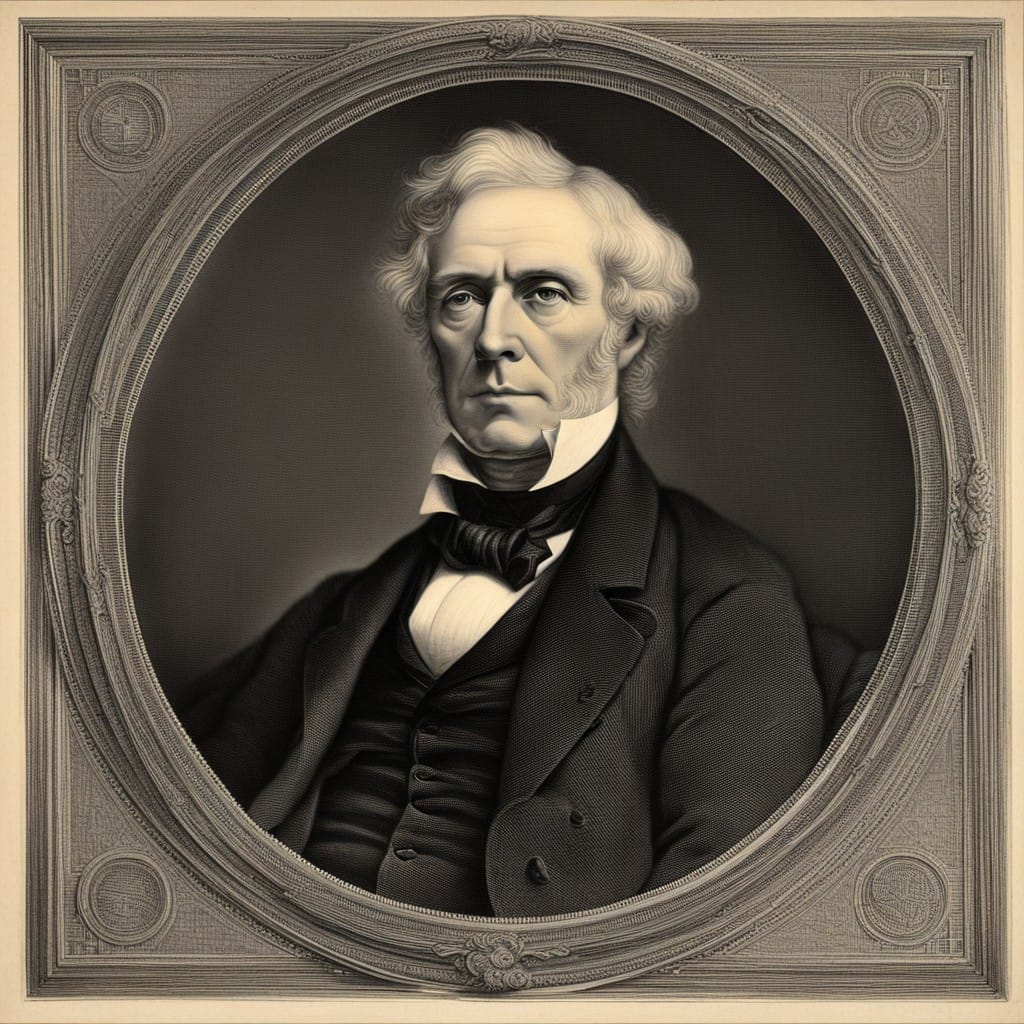
Hendrik Lorentz: The Foundation of Einstein’s Relativity
Hendrik Lorentz (1853–1928) introduced Lorentz transformations, which describe how space and time change at high velocities. His work on electromagnetic waves and the ether was crucial for Einstein’s theory of special relativity, as Einstein later refined Lorentz’s mathematical framework into his famous equation, E = mc².
Lorentz also contributed to the Zeeman effect, which explains how magnetic fields affect light, forming the basis for quantum mechanics and astrophysics.
Émilie du Châtelet: Extending Newton’s Laws
Émilie du Châtelet (1706–1749) was a French physicist and mathematician who translated Newton’s Principia into French, making it more accessible to European scientists. She also expanded on Newton’s work by introducing the idea that energy is proportional to the square of velocity (kinetic energy = ½mv²), a concept later validated in classical mechanics.
Her work on energy conservation and dynamics was instrumental in shaping modern physics, yet she remains overshadowed by her male contemporaries.
Final Thoughts
These physicists made groundbreaking contributions that shaped the modern understanding of science. While Newton and Einstein often receive most of the credit, Maxwell’s electromagnetism, Faraday’s field theories, Lorentz’s relativity principles, and du Châtelet’s energy conservation laws were equally transformative. Recognizing these pioneers helps us appreciate the broader history of physics and the collaborative nature of scientific discovery.
The Future of Physics: Who Are the Next Pioneers?
Physics is at the cusp of a new era, driven by advancements in quantum computing, artificial intelligence, and space exploration. These cutting-edge fields are shaping the next generation of physics pioneers.
Quantum Computing: A New Frontier in Physics
Quantum computing is transforming our understanding of physics by solving problems that classical computers struggle with. Unlike traditional bits, quantum computers use qubits, which can exist in multiple states simultaneously due to superposition and entanglement. This allows for complex simulations, including molecular modeling, climate predictions, and advanced cryptography. Shor’s algorithm, for instance, could potentially break modern encryption systems, while Grover’s algorithm speeds up database searches significantly.
AI-Driven Physics Research
Artificial intelligence is playing a crucial role in modern physics by analyzing vast datasets, identifying patterns, and assisting in experiments. AI is aiding in the search for a “Theory of Everything,” a concept that aims to unify gravity, electromagnetism, and nuclear forces into one framework. AI-driven research is also helping scientists simulate quantum mechanics, process astronomical data, and make discoveries in fundamental physics.
Space Exploration and the Physics of the Cosmos
Quantum computing and AI are revolutionizing space exploration by processing astronomical data at unprecedented speeds. NASA, ESA, and other institutions are integrating these technologies into satellite imaging, exoplanet discovery, and gravitational wave detection. AI models are improving the accuracy of cosmic event predictions and helping physicists understand dark matter, black holes, and cosmic inflation.
FAQ
Who is considered the true “Father of Physics”?
There isn’t a single “Father of Physics.” Ancient Greek philosopher Aristotle is often credited as the earliest pioneer due to his natural philosophy. Galileo Galilei is regarded as the “Father of Modern Physics” for introducing experimentation and the scientific method. Isaac Newton is widely called the “Father of Classical Physics” for formulating the laws of motion and gravity, while Albert Einstein is the “Father of Modern Theoretical Physics” for his groundbreaking theory of relativity. Each contributed uniquely, making physics a collective achievement.
What was Galileo’s greatest contribution to physics?
Galileo revolutionized physics by replacing speculation with experimentation. He studied motion, demonstrated that objects fall at the same rate regardless of weight, and refined the telescope to observe celestial bodies. His advocacy for heliocentrism laid the foundation for modern astronomy and physics. More importantly, he introduced the scientific method, which remains the backbone of all scientific inquiry today.
How did Isaac Newton change the world of physics?
Newton’s laws of motion and universal law of gravitation unified the understanding of terrestrial and celestial mechanics. His book “Philosophiæ Naturalis Principia Mathematica” (1687) transformed physics into a precise mathematical science. Newton’s framework was so powerful that it explained phenomena from falling apples to planetary orbits — dominating physics for more than 200 years until Einstein expanded upon it.
Why is Albert Einstein considered a father of modern physics?
Einstein’s theory of relativity (special and general) redefined concepts of space, time, mass, and energy, famously expressed as E=mc². He also made key contributions to quantum theory through his explanation of the photoelectric effect, which earned him a Nobel Prize. By bridging classical physics with modern theoretical concepts, Einstein reshaped how we understand the universe at both cosmic and atomic levels.
How did early pioneers like Aristotle influence modern physics?
Although Aristotle’s ideas (like heavier objects falling faster) were later disproved, his systematic approach to studying nature inspired centuries of inquiry. He emphasized observation and classification of natural phenomena, which gave structure to scientific thought. While his physics was flawed, Aristotle’s philosophical framework was essential in shaping the questions that Galileo, Newton, and Einstein later answered with more accuracy.
What role did experimentation play in shaping physics as a science?
Before Galileo, physics was mostly philosophical. Galileo’s insistence on testing ideas through measurement and experiment shifted physics into an evidence-based discipline. Newton extended this by applying rigorous mathematics, while later scientists built laboratories, accelerators, and observatories to test ever more complex theories. Without this commitment to experimentation, physics would not have advanced from speculation to precise science.
How do modern physicists continue the legacy of these pioneers?
Today’s physicists build on the foundations laid by these pioneers, using advanced tools like the Large Hadron Collider, space telescopes, and quantum computers. They investigate phenomena from black holes to quantum entanglement, always guided by the same principles of observation, experimentation, and mathematical reasoning. In essence, the spirit of Aristotle, Galileo, Newton, and Einstein lives on in every modern scientific discovery.
Conclusion
The evolution of physics—from the ancient insights of Aristotle and Archimedes to the groundbreaking theories of Isaac Newton and Albert Einstein—highlights humanity’s relentless pursuit of understanding the universe. While Newton is often hailed as the father of physics for his laws of motion and universal gravitation, others argue that Einstein, with his revolutionary work on relativity, deserves the title of the modern father of physics.
So, who is the father of physics? The answer depends on how we define contributions. Newton laid the foundation, Einstein redefined it, and today’s physicists continue to push the boundaries even further with quantum mechanics, string theory, and cosmology.
In the context of India, C.V. Raman is widely recognized as the father of physics in India for his Nobel-winning discovery of the Raman Effect, which had a profound impact on light scattering and optical physics.
As we look ahead, physicists are using quantum computing, AI, and space-based experiments to tackle questions that were once considered unanswerable. The journey of physics is far from over—each generation builds on the past, moving closer to unveiling the deeper truths of existence. And as history has shown us, the next “father of physics” may already be laying the groundwork for tomorrow’s scientific revolution.
🔍 Explore More Scientific Breakthroughs:
If you enjoyed learning about the father of physics and how foundational figures shaped our scientific world, here are more fascinating stories worth exploring:
-
The Invention of Electricity – Discover how electricity was discovered and harnessed, powering a new era of innovation.
- 🔬 The Father of Chemistry – Uncover the legacy of Antoine Lavoisier and how his groundbreaking work laid the foundation for modern chemistry.
-
The War of Currents: Edison vs. Tesla – Dive into the electrifying battle that changed how power is delivered across the world.
-
Failed Inventions That Shaped Progress – Sometimes, failure leads to success. Explore inventions that didn’t work out—but still changed history.
-
Top 10 Female Inventors Who Changed the World – Meet the brilliant women whose innovations have transformed science, technology, and everyday life.


